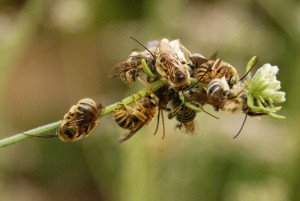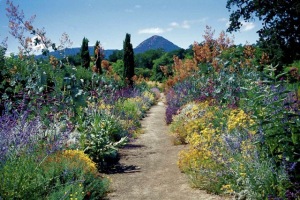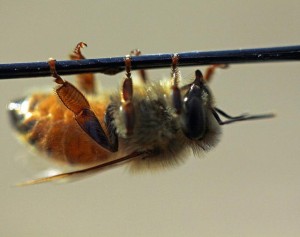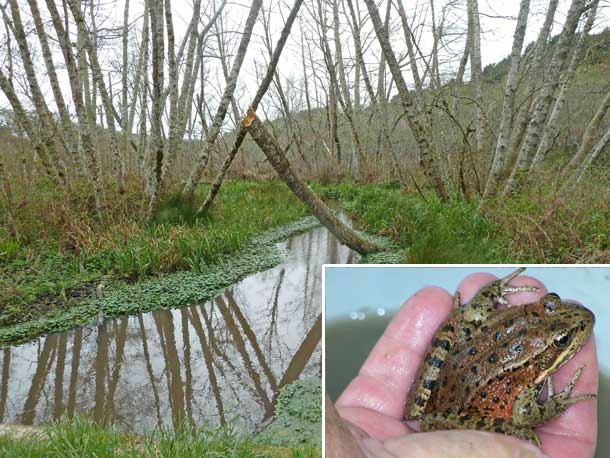Q: Are native bees suffering the same “colony collapse disorder” as honeybees? [Linda, San Ramon]
A: Colony collapse disorder, or CCD, has gotten a lot of media attention, and with good reason. The western honeybee (Apis mellifera) is native to Europe, Africa, and western Asia and was brought from England to Virginia in 1622. The bees, known to some Indians as “the white man’s fly,” readily escaped and spread on their own to the Great Plains. Their progress west was stopped by the Rocky Mountains, until hives were shipped to California during the Gold Rush.
Honeybees are now a major workhorse (er, make that work-insect) for Big Agribusiness and therefore the rest of us. Crops pollinated by honeybees in the United States are worth over $15 billion a year. Every February bees are trucked or flown in from all over the country and even Australia to pollinate California’s almond trees. So when millions of bees disappear, everyone takes notice, including the National Academy of Sciences and the U.S. Congress.
CCD seems to affect only certain commercial beekeepers, who reported bee die-offs of 30 to 70 percent last year! (Organically kept bees and feral hives do not suffer CCD.) Many causes have been suggested-malnutrition, pathogens, immune problems, mites, genetically modified crops, fungi, pesticides, antibiotics, long-distance transport, and electromagnetic radiation, including from cell phones. The last one got a lot of airtime: Use a cell phone, kill a bee. But there’s little evidence to support that. Some sort of immune system collapse is more likely.
Honeybees aren’t the only game in town, however. Native bees are also significant pollinators of food crops. While they are mostly solitary or form only small colonies, California natives are actually more versatile and effective pollinators than honeybees. Mason bees and bumblebees are active when honeybees are not, such as early in the spring and on cold days, and they are more effective at pollinating tomatoes, cranberries, and potatoes. And flowering plants have evolved for the last 100 million years with their respective insect pollinators, so native bees and native plant life cycles tend to coincide.
There are at least 1,600 native bee species in California, according to our resident expert, UC Berkeley’s Gordon Frankie. He says they are not suffering from CCD, but populations are declining due to habitat loss and pesticide use. Agricultural agencies and organic farmers are beginning to recognize native bees’ value. There are many ways to attract native bees: Creating good nesting sites, planting native flowers, reducing pesticide use, and protecting wild habitat all tend to increase the diversity and number of our native bees.
Send us your questions! Email atn@baynature.com.




